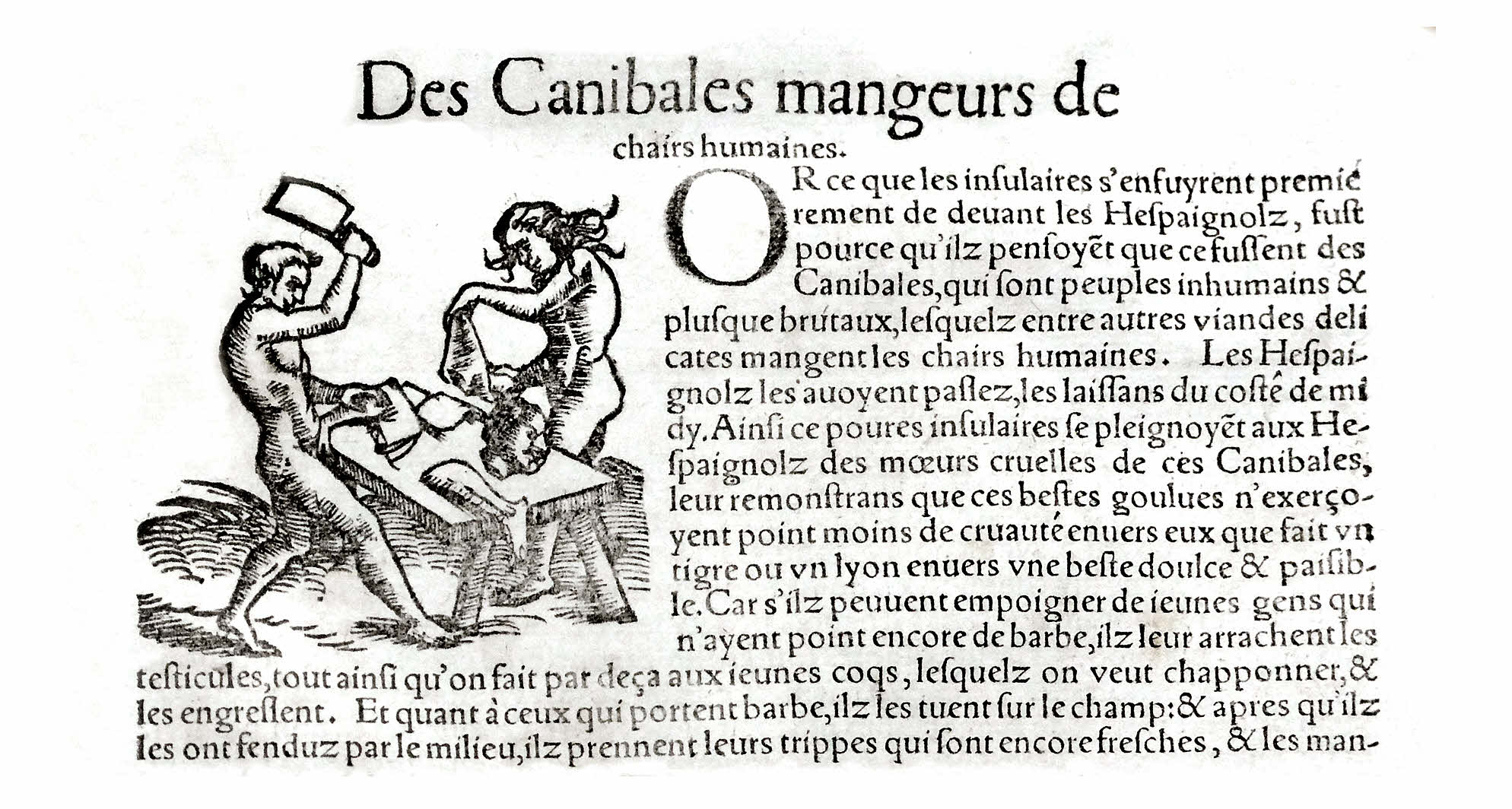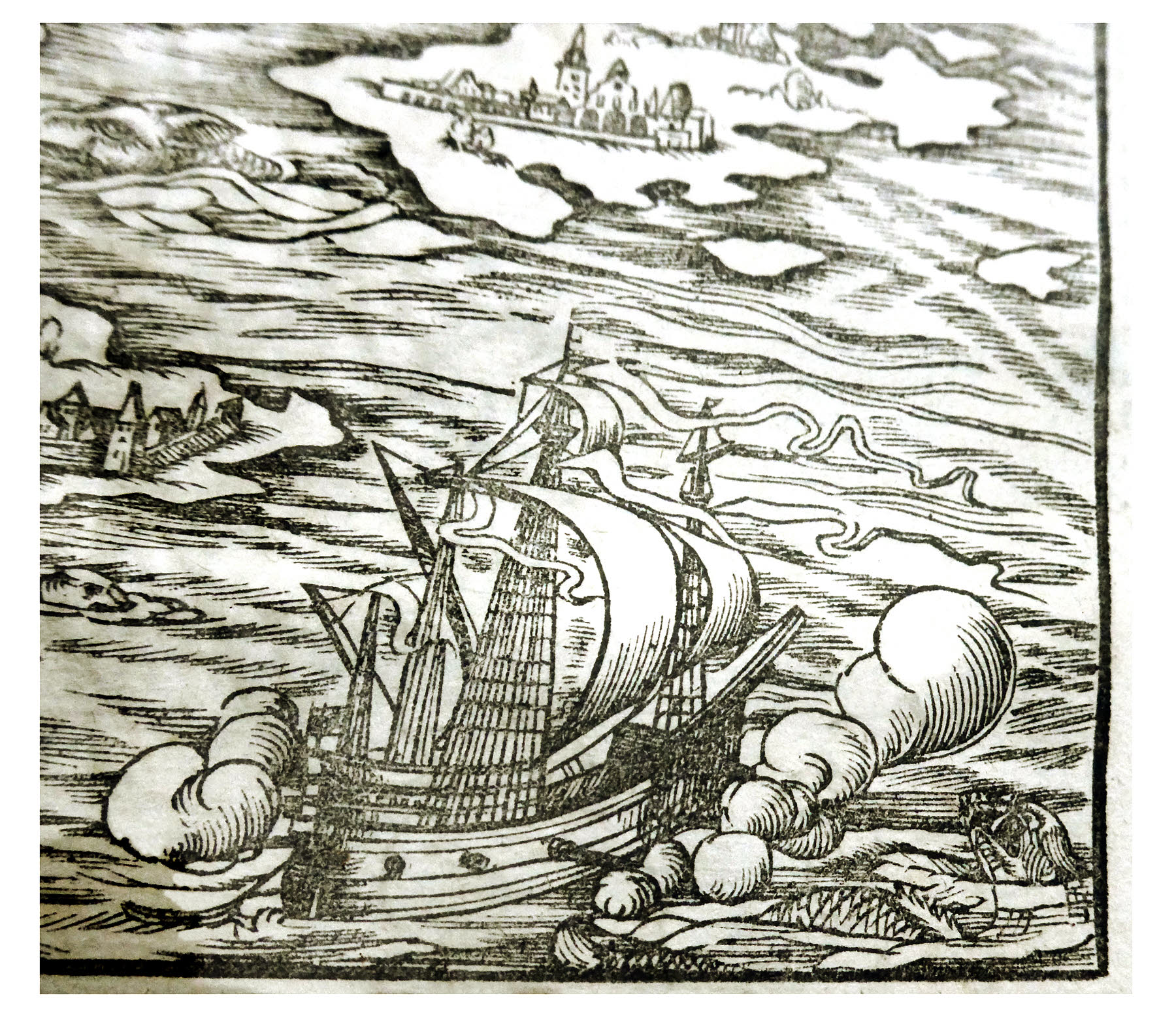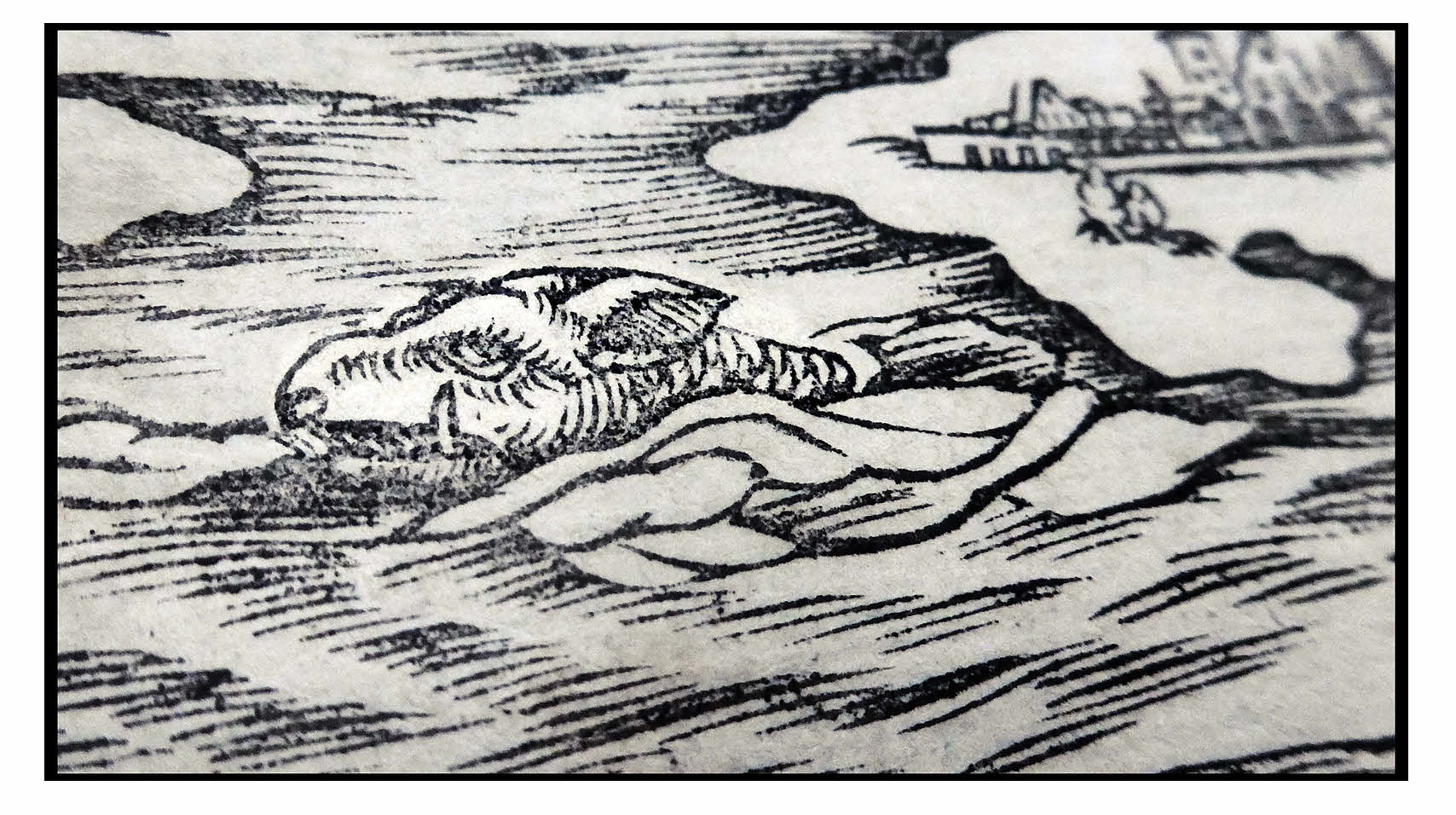
 Bookmark this on Delicious
Bookmark this on Delicious
 Recommend to StumbleUpon
Recommend to StumbleUpon
As yet, a work in progress for family and friends.
As ever, I have not been able to properly convey the subtle tones of the old paper, nor the crispness of the printing. (Unless you want massive downloads, that is!)
In addition, in this instance, I have chosen to darken the ink. The print is extremely acceptable, but an "accurate" rendition would show a "greyer" ink.
I have also removed a few small bits of foxing. (Removed some "foxes"?)
The first two images are from one picture, which is not supposed to be about the ships or the dragons, but that was the bit I liked. It is the picture to go with the text discussing the islands discovered "out west of here" by that Columbus fellow. (His voyage, 1492. First edition Cosmographia, 1544.)
The last is from an article on the other side of the page from the one where the Columbus picture appears.



The illustrations come from a French edition of Sebastian Munster's Cosmographia, which first appeared, in German, in 1544.
Scale: in the first, it is 47mm from tip of mast to waterline. Dragon's head: 16mm from tip of nose to tip of ear. Long dimension of cleaver blade: 9mm.
To continue with more information from Wikipedia...
"The Cosmographia was one of the most successful and popular books of the 16th century. It passed through 24 editions in 100 years. This success was due to the notable woodcuts (some by Hans Holbein the Younger, Urs Graf, Hans Rudolph Manuel Deutsch, and David Kandel). It was most important in reviving geography in 16th-century Europe."
(Otherwise known as "why book collectors go mad".)
The page I took the photos from is 255mm high. (Top bit of printing to bottom bit.) It is paginated 1255/1256. the article on 1255, below the picture the ships and dragons come from, is titled "Des Nouvelles Isles, comment, quand, & par qui elle ont este trouves". (Goodness gracious... my French teachers would never believe it, but if your French is even worse than mine, it says, "The new islands. How, when, and by whom they were found." (My French teachers would recognize my failure to Do What It Takes to put the proper accents in on the French text. Sorry.)
The text begins with the French for "Christopher Columbus, of Genoa...". Later it speaks of him finding two islands, which he named, as the text has it, "Iehanne", and "Hespaignole". The latter, we would of course refer to as Hispaniola. I'm afraid my knowledge of the story is inadequate to allow a guess at what we would say for "Iehanne".
The charming bit about the cannibals follows on, as a new article, after the material about Columbus's two islands.
Oh! The mystery! Online, I've found a few images of pages very similar to my "1265"... but as page "1357". I presume it is a matter of editions. Any help with what my edition might be would be welcome!
Search across all my sites with the Google search button which I have provided at the top left on the page to which the link will take you.
Or...
Search just this site without using forms,
Or... again to search just this site, use...
The search engine merely looks for the words you type, so....
*! Spell them properly !*
Don't bother with "How do I get rich?" That will merely return pages with "how", "do", "I", "get" and "rich".
This page's editor, Tom Boyd, will be pleased if you get in touch by email.
![]() Page WILL BE tested for compliance with INDUSTRY (not MS-only) standards, using the free, publicly accessible validator at validator.w3.org. Mostly passes. There were two "unknown attributes" in Google+ button code. Sigh.
Page WILL BE tested for compliance with INDUSTRY (not MS-only) standards, using the free, publicly accessible validator at validator.w3.org. Mostly passes. There were two "unknown attributes" in Google+ button code. Sigh.